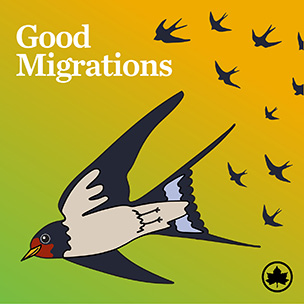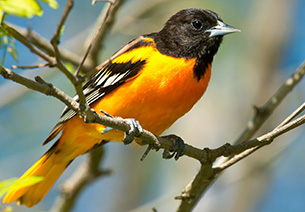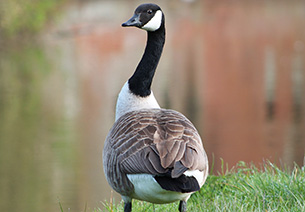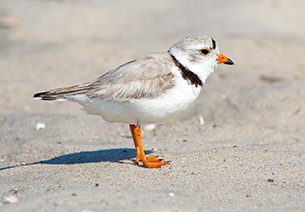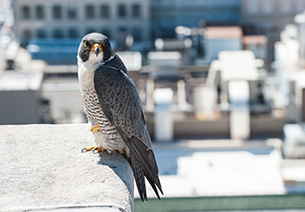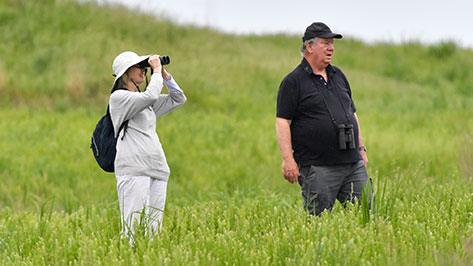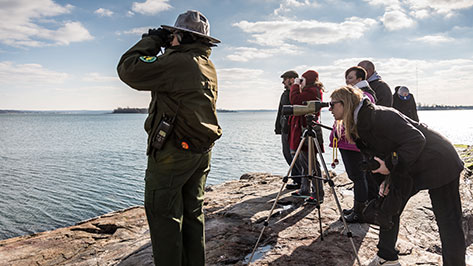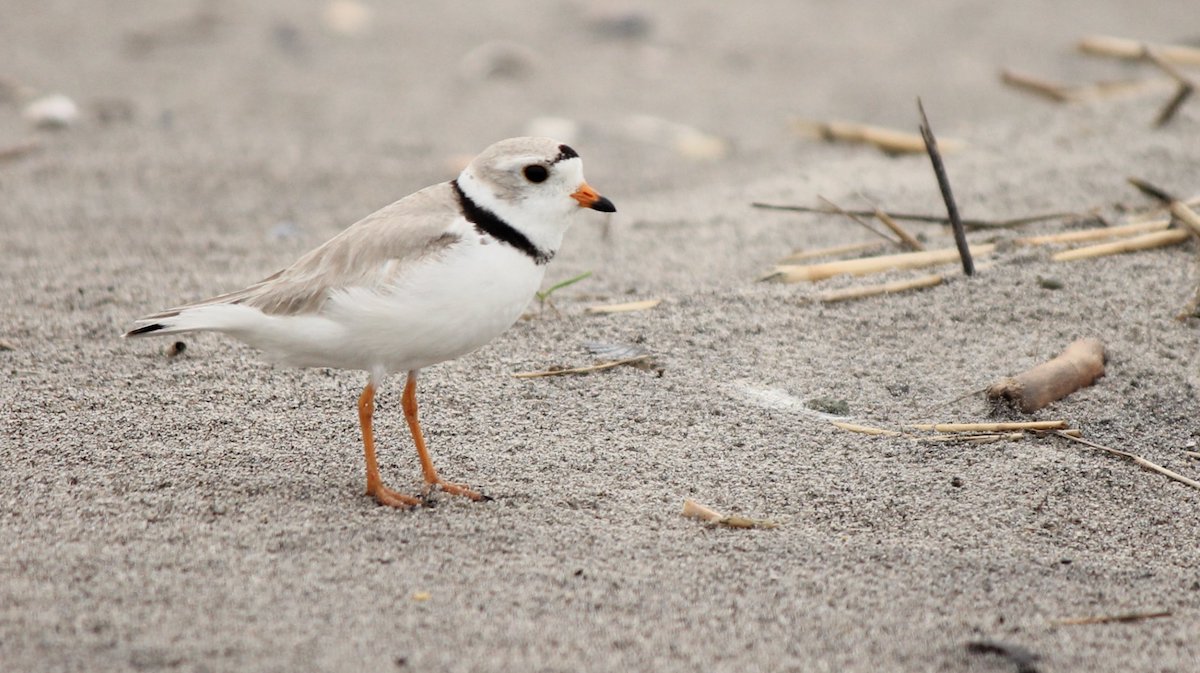Spring and Fall Migration in New York City

Each spring and fall, birdwatchers have the special opportunity to see hundreds of species of songbirds, shorebirds, birds of prey, and waterfowl that visit New York City, thanks to our city's prime location along the area traditionally known as the Atlantic Flyway.
What is the Atlantic Flyway?
Millions of birds use flyways (or migration corridors) to migrate in order to avoid overpopulation in their breeding grounds and to find more abundant food supplies. The concept of a “flyway” is primarily a theoretical one, bringing together a geographic region of routes used differently by migratory species — the distance traveled along the flyway and specific routes taken vary by species and can vary by season.
The Atlantic Flyway is one of four major migration corridors in North America. It stretches from Greenland and Nova Scotia in the north along the eastern coast in North America to the tropics of the Caribbean. New York City is situated directly in the Atlantic Flyway and our city’s parks provide ideal spots for migratory birds to rest and refuel on their epic journeys.
When is Peak Fall and Spring Migration?
In New York City, spring migration spans March to June, with peak songbird migration occurring between mid-April and mid-May. Fall migration spans a larger portion of the calendar. It can start as early as mid-June for some species and last through December. Peak fall migration in NYC often occurs between mid-August and mid-October.
Frequent Fliers
Common migratory birds in New York City include:
Waterfowl
such as ruddy ducks, black ducks, snow geese, tundra swans, Canada geese, and Atlantic brants
* Click on images above to view larger
Navigating the Flyway
Migratory birds use a variety of methods to navigate the flyway:
-
Topographical cues, such as coastlines, river courses, and mountain ranges, help to guide the journey.
-
Astronomical and physical signposts, such as the stars, the sun, and the earth’s magnetic field, also aid in the steering of migrating flocks towards their destinations.
-
Migrating at night is another option many birds choose in order to conserve energy due to cooler temperatures and a less turbulent atmosphere to fly through. They can also avoid daytime predators. Large migrating flocks routinely show up on nighttime radar scans at airports, such as JFK Airport. During the day, they descend upon our greenspaces, providing spectacular opportunities for birdwatching.
How Parks Cares for Migratory Birds
The wetlands, grasslands, beaches, and forests of NYC are critical refueling stops for tens of thousands of birds that pass through in each migration season. NYC Parks staff and volunteers work hard to protect these spaces by:
- removing plant species that harm our parks' biodiversity,
- planting helpful grasses, trees, and shrubs, and
- educating the public about co-existing with wildlife
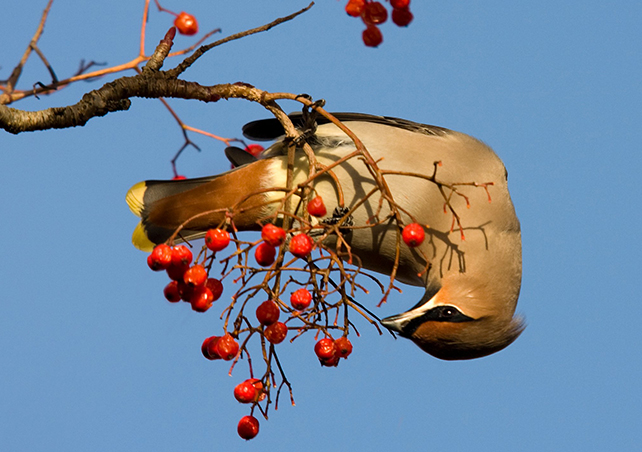
How You Can Help Birds Safely Visit Our City
As birds fly through our city during spring and fall migration, follow these helpful tips to help keep our feathered friends safe:
Make Your Windows Bird-Safe
As migratory birds journey through urban areas, they face threats from human-made structures. Glass-covered buildings present a collision hazard, as the reflection of open space in glass windows may confuse birds. NYC Local Law 15 requires new construction and significantly altered buildings to use materials that reduce bird strike fatalities. You can make your own windows bird-friendly by installing bird-safe glass or adding temporary decals during migration periods.
Turn Off Unnecessary Lights at Night
Many birds migrate in the evenings or overnight. Scientists have suggested the bright lights of urban areas may be interfering with the navigation abilities of birds that use the position of stars to navigate. Campaigns like Lights Out New York and others across the country have been created to dim bright building lights during migration season to provide safer passage for birds. There are also resources online that provide forecasts of nocturnal bird migrations.
Avoid Feeding Them
Birds making the migratory journey are well adapted to finding their own healthy food and do not need supplemental food from humans. Never feed or provide food for wildlife. Food items commonly given to birds, like bread and corn, are low in necessary nutrients and can displace healthy foods that the birds naturally eat, causing them to become malnourished. Feeding waterfowl directly can also promote water pollution and disease in waterfowl populations.
Report Injured Birds
If you see an injured bird in a park, please report it to our Urban Park Rangers by calling 311. If you discover an injured bird outside of our parks, bring it to your local Animal Care Center or to our friends at the Wild Bird Fund. You can also volunteer with NYC Audubon’s Project Safe Flight to collect data during spring and fall migration.
Baby Birds
In the springtime, you may discover fledglings (baby birds that are fully feathered) on the ground. Give them some space; they're likely still working on their wing strength, and their parents are likely nearby.
Birding in New York City
Ready to go exploring? Grab your binoculars and join us in the parks!
Best Places
to Go Birding
Discover the best birding spots in our city, especially during peak migration times.
Birding Events
Whether you’re new to birding or new to the city, join our birding events with our Urban Park Rangers and friends!
Piping Plovers
Every spring, these tiny, endangered shorebirds visit Rockaway Beach to nest and raise their chicks through summer!

